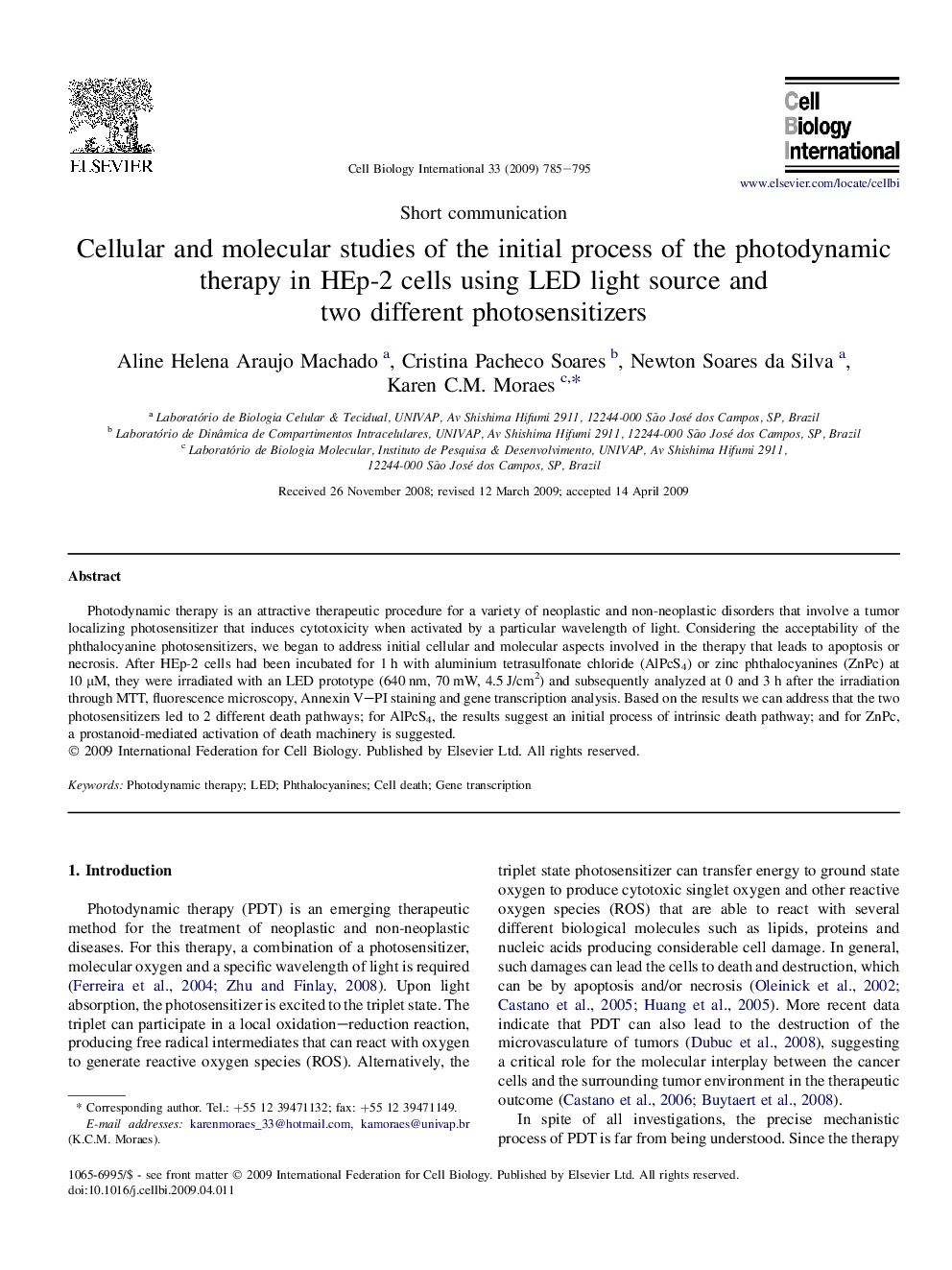| کد مقاله | کد نشریه | سال انتشار | مقاله انگلیسی | نسخه تمام متن |
|---|---|---|---|---|
| 2067132 | 1077883 | 2009 | 11 صفحه PDF | دانلود رایگان |
عنوان انگلیسی مقاله ISI
Cellular and molecular studies of the initial process of the photodynamic therapy in HEp-2 cells using LED light source and two different photosensitizers
دانلود مقاله + سفارش ترجمه
دانلود مقاله ISI انگلیسی
رایگان برای ایرانیان
کلمات کلیدی
موضوعات مرتبط
علوم زیستی و بیوفناوری
بیوشیمی، ژنتیک و زیست شناسی مولکولی
بیوفیزیک
پیش نمایش صفحه اول مقاله

چکیده انگلیسی
Photodynamic therapy is an attractive therapeutic procedure for a variety of neoplastic and non-neoplastic disorders that involve a tumor localizing photosensitizer that induces cytotoxicity when activated by a particular wavelength of light. Considering the acceptability of the phthalocyanine photosensitizers, we began to address initial cellular and molecular aspects involved in the therapy that leads to apoptosis or necrosis. After HEp-2 cells had been incubated for 1 h with aluminium tetrasulfonate chloride (AlPcS4) or zinc phthalocyanines (ZnPc) at 10 μM, they were irradiated with an LED prototype (640 nm, 70 mW, 4.5 J/cm2) and subsequently analyzed at 0 and 3 h after the irradiation through MTT, fluorescence microscopy, Annexin V-PI staining and gene transcription analysis. Based on the results we can address that the two photosensitizers led to 2 different death pathways; for AlPcS4, the results suggest an initial process of intrinsic death pathway; and for ZnPc, a prostanoid-mediated activation of death machinery is suggested.
ناشر
Database: Elsevier - ScienceDirect (ساینس دایرکت)
Journal: Cell Biology International - Volume 33, Issue 7, July 2009, Pages 785-795
Journal: Cell Biology International - Volume 33, Issue 7, July 2009, Pages 785-795
نویسندگان
Aline Helena Araujo Machado, Cristina Pacheco Soares, Newton Soares da Silva, Karen C.M. Moraes,